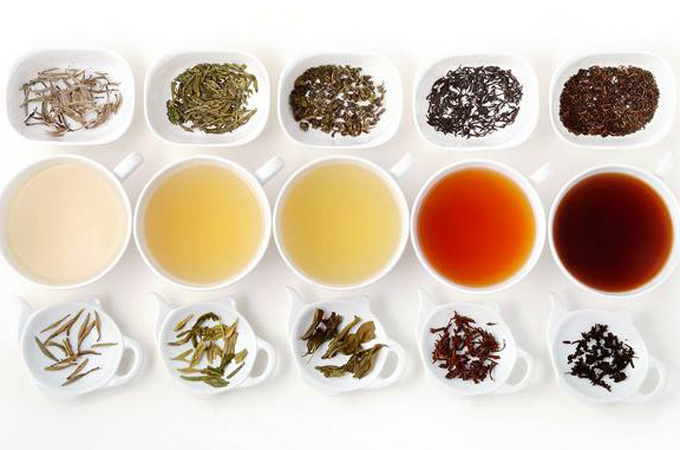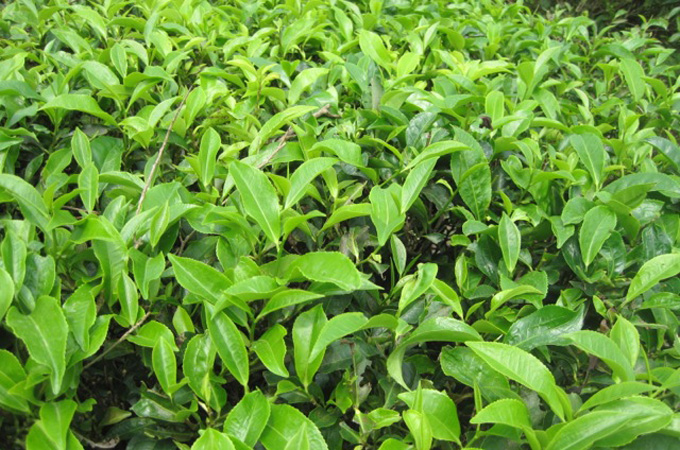Indian tea tastes success in China
More and more Chinese are turning to Indian black tea, boosting business for tea growers in India’s northeast.

The British brought tea to India from China, but Indian tea traders are now coming back to the Land of the Dragon with ever greater quantities of their black tea.
“I tell our Chinese buyers, we have brought back your teas to you,” says Rajiv Lochan, who started the reverse trade seven years ago.
A former tea executive with leading multinationals, Rajiv’s start-up venture Lochan Tea got into the first-ever deal with a Chinese company to import India’s famous Darjeeling tea in 2006.
Seven Indian companies joined a Tea Expo in Beijing in 2004, but only Lochan Tea managed to sell one tonne of Darjeeling tea to the Chinese company Dongli.
“That was a humble beginning, but I was sure one day we will sell huge quantities of our teas to the Chinese,” said Lochan. “I knew it was China and not Europe which will be our next big market.”
But what happened thereafter surprised even a seasoned tea trader like Lochan.
“The Chinese did not develop a taste for Darjeeling tea. Instead, they took a huge fancy for the strong liquor of Assam,” Rajiv Lochan told Al Jazeera.
“This is one of the plus sides of globalisation, I would imagine,” said Lochan on the sidelines of the K2K forum meeting in a hotel in eastern Indian city of Kolkata.
Kunming to Kolkata
The K2K (Kunming to Kolkata) brings together businessmen, academics and civil society activists from China’s Yunnan province and eastern India in round-the-year contact to develop cooperation.
Kunming is Yunnan’s capital and Kolkata is eastern India’s biggest city.
The forum started a decade ago and has blossomed into a major sub-regional initiative promoted by New Delhi and Beijing.
 |
| Rajiv Lochan’s start-up venture got into the first-ever deal with a Chinese company to import India’s famous Darjeeling tea in 2006 [Subir Bhaumik/Al Jazeera] |
During its last annual conclave in Kolkata, now declared a sister city of Kunming during Indian Prime Minister Manmohan Singh’s Beijing visit in October, the forum decided to push for a ‘land corridor’ (read: highway) between Kunming and Kolkata through Bangladesh and Myanmar.
Tea traders like Rajiv Lochan want that to happen soonest, taking the route of the Bangladesh-China-India-Myanmar (BCIM) car rally in February-March this year.
“As our exports of black tea to China grows, we would need a shorter land route, rather than have to go through the long sea route to ports in eastern China,” Lochan said.
Tea is one of the seven key necessities for any Chinese – wood, rice, oil, salt, soy sauce and vinegar being the other six.
But down the centuries, the Chinese have loved drinking their huge varieties of green tea, refilling their lovely ceramic tea pots with hot water, again and again.
China’s expanding tea market
The upper end of the Chinese tea market has got a huge boost in recent years with the re-emergence of the traditional Chinese tea houses, historically a social space where people cutting across age barriers gather to chat and conduct business.
Prices for China’s top-end teas are reaching record highs. A pot of top-grade Pu Er tea, for example, costs a mighty $300, sometimes even more.
In Kunming, I was taken to a top ‘tea house’ by a senior official of the Chinese Communist Party recently. In what looked like an elite club, the official had a separate room to himself to entertain his friends.
But that is where he had stored his ‘special teas’, all for guests considered important. All conversation thereafter took place over endless cups of the best of Yunnan Pu Er tea, specially made by trained hostesses.
But that is beginning to change with the young in China.
 |
| Indian teas, especially with sugar and milk, have recently become more popular in China [Subir Bhaumik/Al Jazeera] |
At Starbucks or Kentucky Fried Chicken (KFC) in Kunming’s busy downtown, one can easily spot scores of Chinese youngsters sipping black tea with milk and sugar.
“We are beginning to love this creamy strong tea, which, I am told, comes from India,” says Wang Lin, a business executive in Kunming.
Chinese friends say this love for black tea with sugar and milk is as much a fashion as having a cup of western-style Starbucks coffee.
“But this has not come from India or Western countries as much as from Taiwan, where sweet milk tea with tiny balls of taro flour called zhenzhu naicha has been popular for several years,” says Zhao Bole.
Lochan admits that much of the black tea he now sells to China is Assam CTC, a strong liquor base brew produced in the northeast Indian state.
“I do sell some boutique Oolong tea but much of what I or other Indian traders sell to China now is Assam CTC,” said Lochan. “The thick creamy tea with milk and sugar is not possible without the strong Assam CTC.”
Lochan Tea exports 2.5 million kilograms of teas a year – one-fifth of that to China.
“But it is growing all the time,” he said, insisting he does not miss a single tea fair in China these days.
The Indian Tea Board says exports to China is still a small fraction of the country’s outbound teas.
Two-and-a-half to three million kilograms of India’s 200 million kgs of tea export were sold to China between 2011-12, but that is climbing sharply, and the 2012-13 export to China is expected to be double of that.
“I know this market for Indian tea is growing in China especially because our teas are used for instant tea,” said Aditya Khaitan of Mcleod Russel, one of the top Indian tea companies.
Analysts feel this market could grow rather fast.
“I would not be surprised if India can sell 25 million kgs to China by 2015-16,” said Anirban Roy of www.indiatea.co.in, a specialised web portal. “The exports seem to be doubling every year.”
Rising demand
Tea Board chairman GVK Bhanu says the rising trend of Indian tea exports to China is “very encouraging”.
“I understand it is picking up quickly. I hope our optimism is rewarded,” he said.
Lochan, whose teas are not bought by some of China’s biggest business houses like Wahaha, agrees, but he is not oblivious to challenges.
When Chinese tea-growers in Yunnan figured out that there was a growing demand for Indian black tea in the domestic market, they tried to grow their own black tea to feed that market in the last two years.
“But at Yunnan’s altitude, like Darjeeling, it is impossible to grow Assam type CTC tea. Their consignments were rejected by the likes of Lipton,” said Lochan.
 |
| Some tea plants cannot be grown at higher altitudes, such as Yunnan in China, and are therefore more easily grown in locations in India [Subir Bhaumik/Al Jazeera] |
At that point, the Chinese authorities came down hard on Indian tea imports, citing higher levels of chromium in Indian tea (15ppm against the acceptable limits of 5ppm) as a health hazard.
“At least 50 consignments totaling 25 tonnes of our teas were sent back during the last two seasons,” Lochan told Al Jazeera.
But as the Chinese realised the Yunnan black tea would not be picked up by the likes of Lipton or Starbucks or others looking at Indian black tea, they relented and Indian tea exports resumed.
That is good news for those growing tea in Assam.
“We grow some real good CTC here in Assam, tea with a strong liquor base, and China is not far away,” says Sahiram Pareek of Shyamraipore tea estate in Assam.
“If the Chinese market for our teas really grows, we will start getting good prices and that will be real good for the tea industry in Assam,” Pareek told Al Jazeera.
Assam, with its 800-odd tea estates, accounts for more than 55 percent of India’s tea output that hovers around one billion kilograms a year.
That is behind China, whose output is above 1.5 billion kilograms, but only 7 percent of which is black tea.